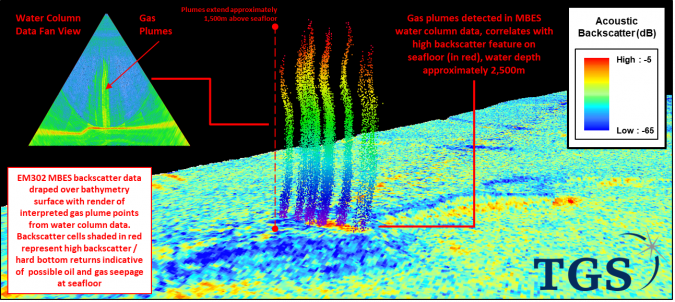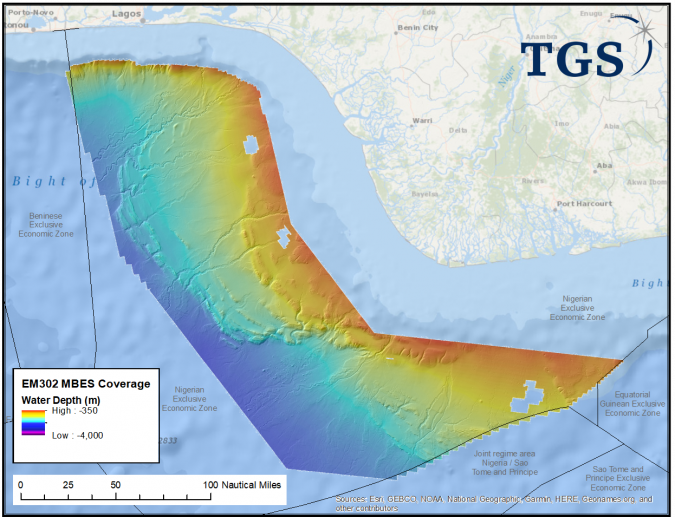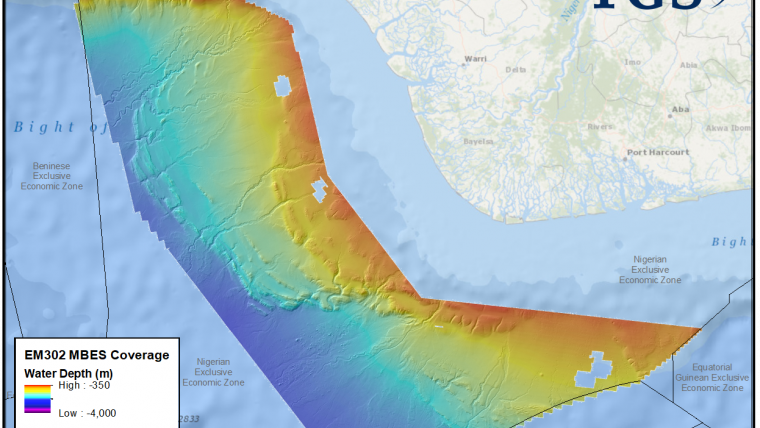TDI-Brooks Completes Multibeam Phase for TGS Offshore Nigeria
TDI-Brooks International (under contract to TGS) has completed the offshore multibeam phase offshore the Niger Delta. This survey took place in water depths of 750 to 3,500 metres and is Nigeria’s first regional multi-client Multibeam and Seafloor Sampling (MB&SS) study.
TDI-Brooks’ R/V Gyre acquired 82,000 square kilometres of high-resolution hull-mounted multibeam echo sounder data. During the multibeam data collection, a total of 1,223 active hydrocarbon seeps were detected in the multibeam water column data. Onboard hydrocarbon seep analysis was conducted in near real-time onboard the vessel to expedite the process of core selection. The Gyre is fitted with an EM302 MBES (EM304 upgrade pending).
Surface Geochemical Exploration
The R/V Proteus is scheduled to begin acquisition of the follow-up Surface Geochemical Exploration (SGE) coring campaign in July 2020, where approximately 245 piston core samples targeting suspected seep features selected from the MBES dataset will be collected, along with an additional 45 additional piston core samples for geotechnical and biostratigraphic studies. An additional 17 surface heat flow measurements will also be collected as part of the programme.

SGE is a petroleum prospecting tool based on the premise that traces of upward migrated petroleum from deep source rocks and reservoirs can be detected in targeted seabed sediments and used to evaluate exploration potential.
Modern SGE campaigns utilize an integrated approach to identify seepage on the seafloor, pinpoint core locations, and accurately characterize geochemical results. The science and art of this seep hunting involves: (1) proper selection of core sites from the geophysical records, (2) safe and skilled acquisition of seabed cores at these exact sites, (3) analytically distinguishing promising samples from samples with varying levels of natural background concentrations, and (4) properly interpreting the geochemical results in a geologic context.
Interpretation of Survey Results
TDI-Brooks uses a sequence of specific procedures that it has developed and improved over several decades. The company’s method consistently yields highly accurate identification and a quantitative evaluation of potential sites with migrated oil. The interpretation of survey results is made even more robust by comparison with TDI-Brooks’ worldwide database of SGE survey results from 100,000+ samples that have been collected, analysed and interpreted over the years. The process consists of the following sequential steps: core site selection, core acquisition, laboratory analysis and interpretation.
Upon completion of analyses, geochemical data are combined with geophysical and geological datasets to provide insight into migrated hydrocarbons, their type and maturity, and to prove up charge. Surface geochemistry exploration campaigns are a low-cost exploration tool that provide insight into reservoirs at depth before a well is ever drilled.















